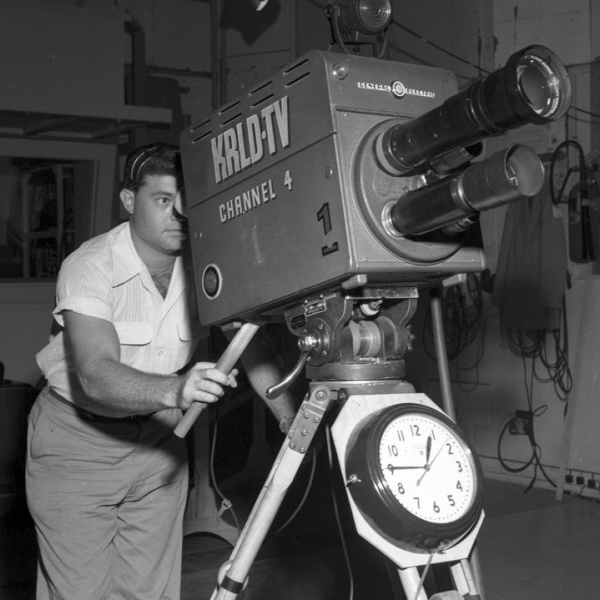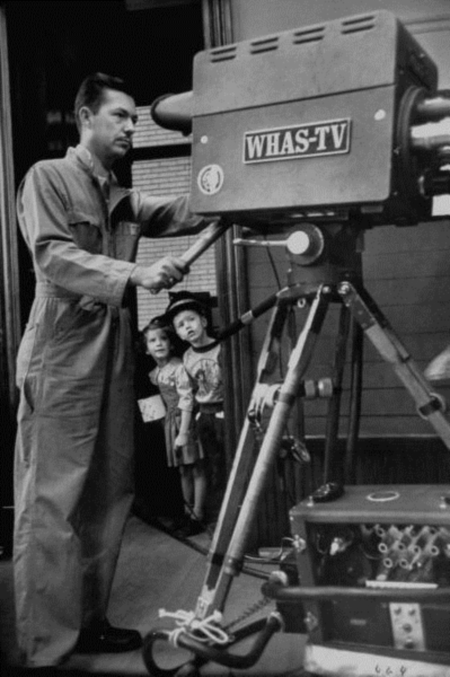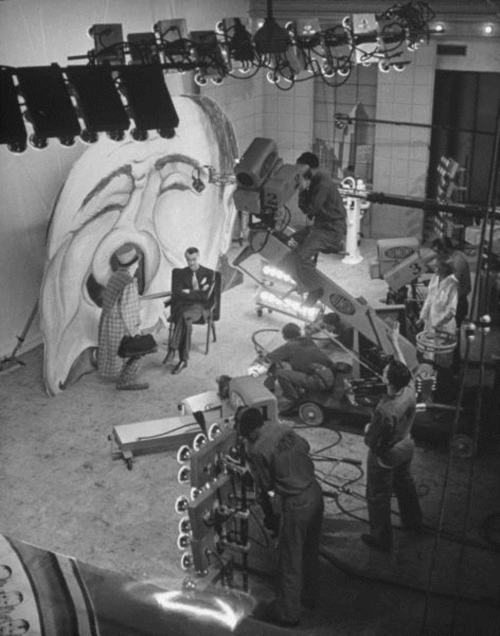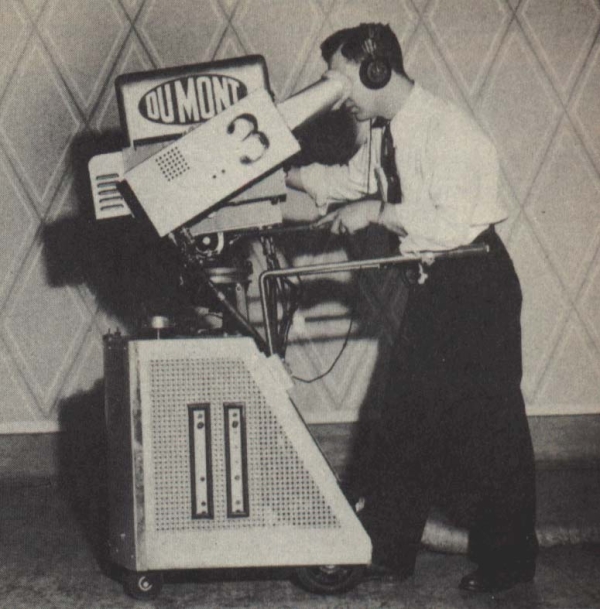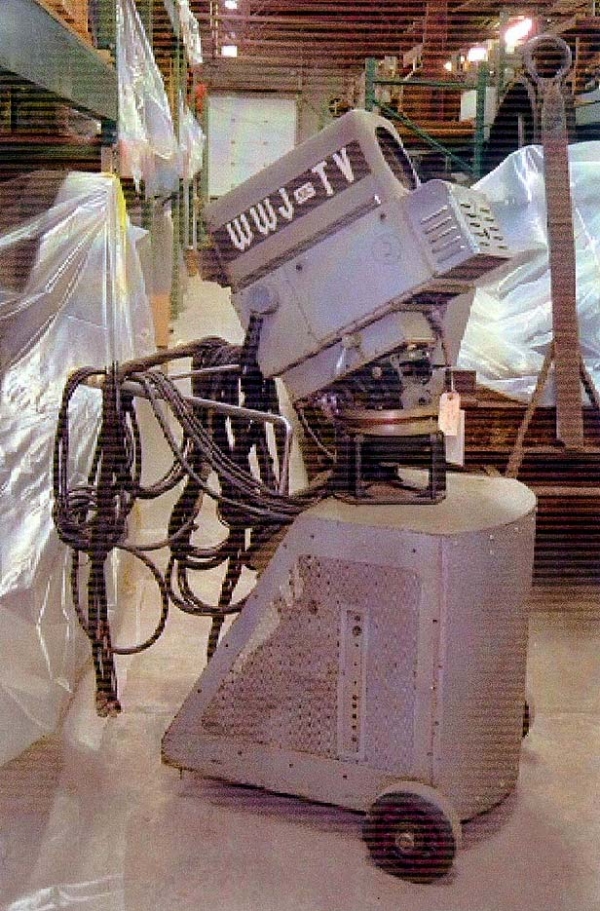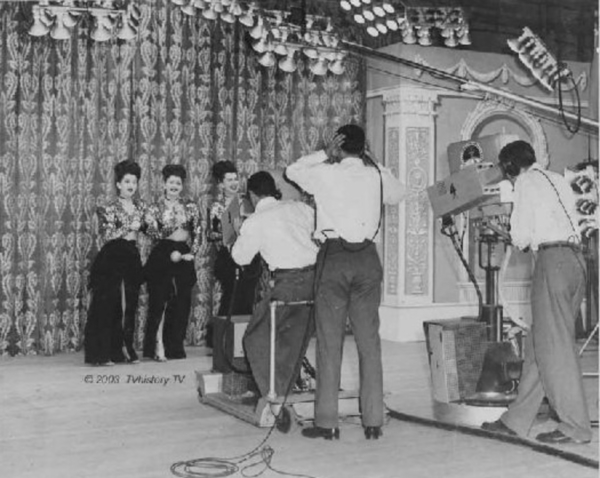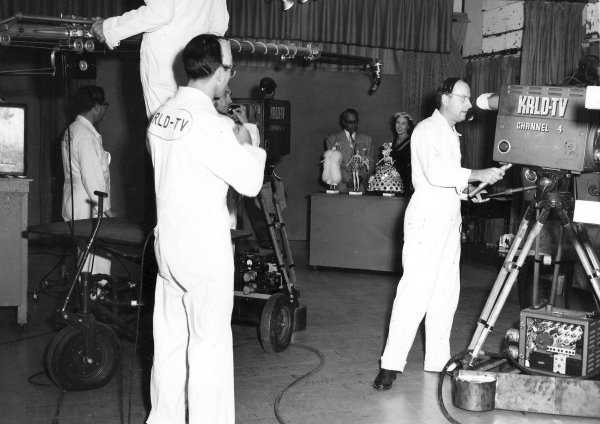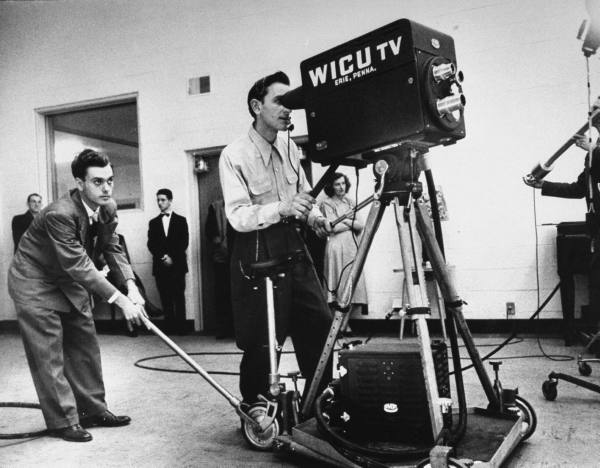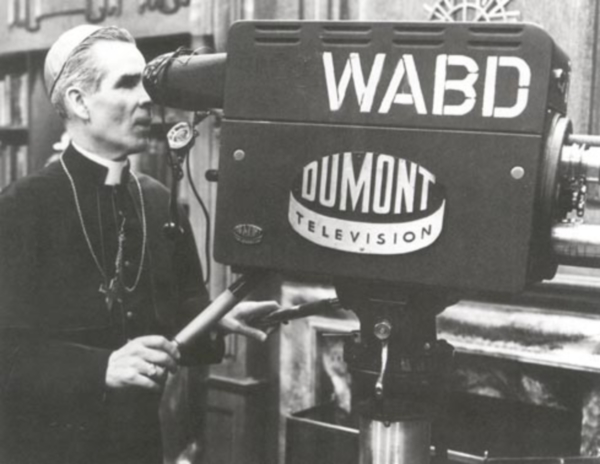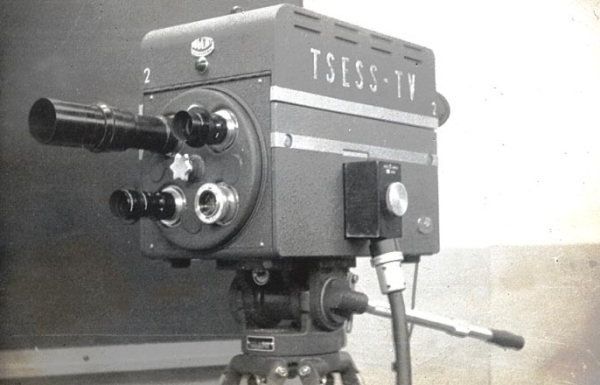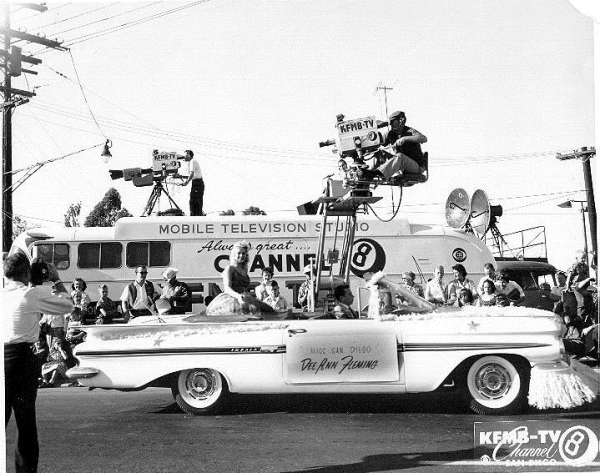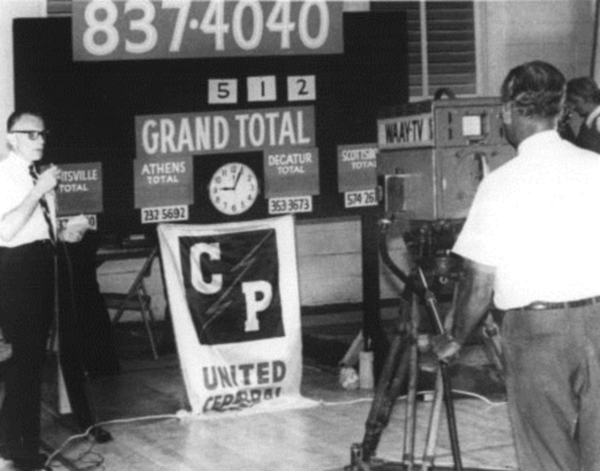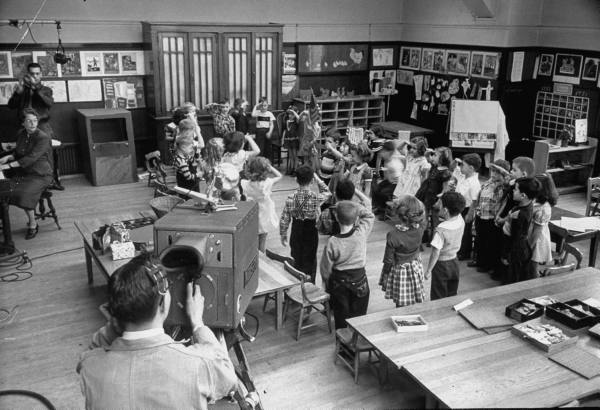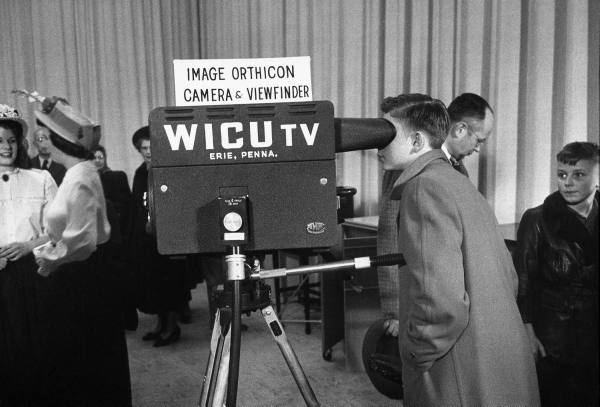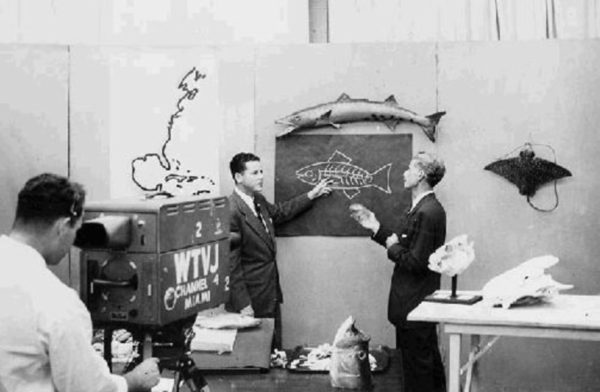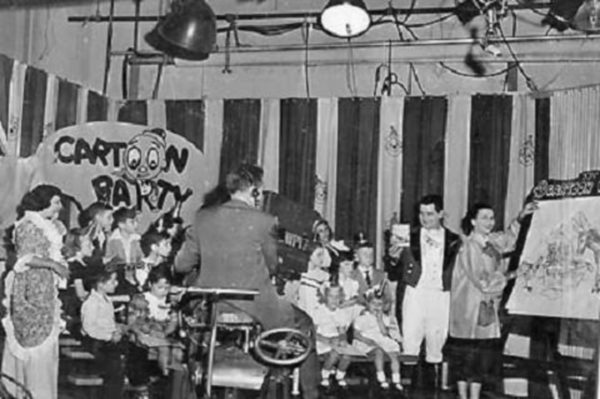Unfortunately, many TV historians refer to the DuMont Network as “the forgotten network,” and in many ways, that’s true. There were brief spurts of growth and promise, but there seemed to be twice as many pitfalls. After only ten years, the network shut down in 1956. Some problems were just plain old bad luck, but some problems came from the sharp elbows of fierce completion from much bigger players like NBC, CBS and ABC. Remember, before television, they had big, well-known radio networks and long histories with AT&T, which supplied all the phone lines for their radio networks. DuMont was TV-only and had no radio exposure. AT&T’s coaxial access for TV signals would become a major issue for DuMont as time and space rationing come into play in the early 1950s.
The DuMont network as an offshoot of DuMont Labs, created in 1931 by Allen B. DuMont, and they actually had a number of early innovations including the first consumer, all electronic television set in 1938. Later that year, they were granted an experimental television license in New York City. In 1945, DuMont took on a partner; Paramount Pictures which seemed like a good idea a the time, but that too turned sour.
As you will see on the GE camera page, it has just recently come to light that DuMont actually manufactured GE’s early Image Orthicon camera line. GE’s Iconoscope cameras with their internal viewfinders looked quite different than DuMont’s with their side mounted viewfinder. If you have ever noticed the striking similarity of the GE and DuMont cameras starting around 1948 and wondered why they looked so alike, well…now we know.
I was going to start with the comparison of the early DuMont image orthicon cameras and their GE twins, but…that’s before these images came in! I’ve just got to start the DuMont page with these two stunning photos of the famous DuMont Electronicam in action.
NOW THIS IS RARE! These are two images (above and below) I have never seen anywhere else, and I thank the unnamed private collector who was kind enough to share them with me. Above, we see the full cast of ”The Honeymooners’ with Jackie Gleason at the controls of the 35mm version of the DuMont Electronicam. This setup marries a modified 124B image orthicon camera to a modified Mitchell 35mm studio camera through the use of a beam-splitter. The Electronicam was designed in both 35mm and 16mm versions and below (color image) is the 16mm version owned by Chuck Pharis.
Below, another very rare image from the same collection. Here is one of the very few pictures ever made of the full three-camera set-up used to record an episode of The Honeymooners. The program was recorded on Kodak Tri-X film. The video signals from the cameras are fed to the control booth, where the director chose the shots live. A kinescope tele-recording of the shots chosen by the television director during the performance is then used in editing to match those shot preferences to the three film versions to produce a final 35mm copy. Interestingly, this is how many shows are done today. Now, it is quite common for each camera to feed it’s own dedicated VTR. I’ve written about this editing and production technique in the Gallery in the story about how the Conan Show on TBS is put together. I hope you’ll read it.
Taking a close look at the two pictures below, we see practically no difference between the top image of the GE-badged camera and the DuMont 124B Image Orthicon camera below. Interestingly, both bear a similar feature of the early RCA Iconoscope and TK40 and 41 lines…can you spot it? Clue: see the right hand pan handle. Like the RCAs, it’s a twist to focus handle.
KRLD photo courtesy Andrew Dart at akdart.com. WHAS photo courtesy Life Magazine.
Let’s go back to the start of the DuMont cameras and work our way forward. We’ll start in 1946.
Above is a 1946 shot from the control room of the DuMont broadcast studios at Wanamaker’s Department store in NYC. There are three live iconoscope cameras on the set, and they are seen below. Interesting that all the lighting is from flood lights with no big scoops or spots, but these cameras did require a lot of light.
Above we see, at Philadelphia’s WFIL, the DuMont iconoscope camera and pedestal. The peds for these cameras served double duty as they not only moved it, but housed part of the CCU. You can’t see it above, but there are 5 cables coming out of the camera head and go into the pedestal where some of the electronics were housed. For a better look at the design, I’ve attached a color photo below that Chuck Pharis sent me a while back. Chuck took this picture through a wire fence at the Henry Ford Museum’s warehouse and it is the only known intact DuMont Iconoscope surviving.
Photos courtesy Life Magazine and Chuck Pharis
You can see the extra ”on board’ components again in these two images of the DuMont iconoscope cameras at work in 1947 at KTLA-TV in Los Angeles. From what I can tell by photo dates, the I/O 124B camera probably came out in late ’47 or early ’48.
Photos are courtesy Tom Genova’s site, TVHistory.TV.
Even though we’ve moved into the next phase of DuMonts with the introduction of the 124B Image Orthicon cameras, they still require the “on board” CCU component. That pretty much rules out using them with any Houston Fearless pedestals.
KRLD photo courtesy Andrew Dart at akdart.com
Life Is Worth Living was the name of the show hosted by Bishop Fulton J. Sheen, seen above behind a DuMont Network camera. His show on DuMont won an Emmy in 1953 and ran from ’52 to ’56 on DuMont, and went to ABC when DuMont went dark. Below is a nice, clean shot of a DuMont 5098C head and cable connecting device. You can see one of these in the University of Nebraska Collection by clicking here.
Top photo courtesy archbishopfultonsheencentre.com and below is courtesy TVHistory.TV
Above is a 1958 shot from KFMB in San Diego showing two DuMont 124Bs on location. Notice the huge, early telephoto lens on the far camera and that great Chevy Impala convertible.
Huntsville Alabama’s WAAY-TV Cerebral Palsy telethon in 1963. Notice how small the DuMont viewfinders were compared to RCA’s.
Photo courtesy M. B. Smith IV and www.31alumni.com
1948: A WHAS DuMont camera captures this class room singing and saluting the flag. An experience like this in 1960 forever lit my desire to have a Marconi Mark IV camera. Two of them shot my fourth grade class dancing at WETV in Atlanta. I’m still trying to get that camera.
Photo courtesy Life Magazine
I wonder if the boy looking into this camera at a 1949 WICU open house later went into television? I’ve noticed that a lot of us in broadcasting were influenced by things like this at an early age. Obviously some in the photo below are under the influence of something as we see an early college-level TV class in session. What a mess. Can you spot both cameras?
WICU photo courtesy Life Magazine. Below courtesy Rollo Thomase.
Above shows the 124B at Florida’s first TV station, WTVJ in Miami (my old alma mater). I’m guessing this is circa 1948 and would bet these were the station’s first live cameras. Here is another factoid about WTVJ: according to the PBS series Pioneers Of Television, Merv Griffin once hosted a kids show there. I can’t find that reference anywhere else, but I saw the clip with the WTVJ logo in the frame and he was definitely not a guest. Speaking of kids’ shows, that’s where we find the HF dolly mounted 124B below. Seems that with the extra on board equipment the DuMonts required, your only mounting choices were either the very awkward DuMont push pedestals or a tripod with a shelf. To get any up or down motion, the only answer was a dolly or crane.



